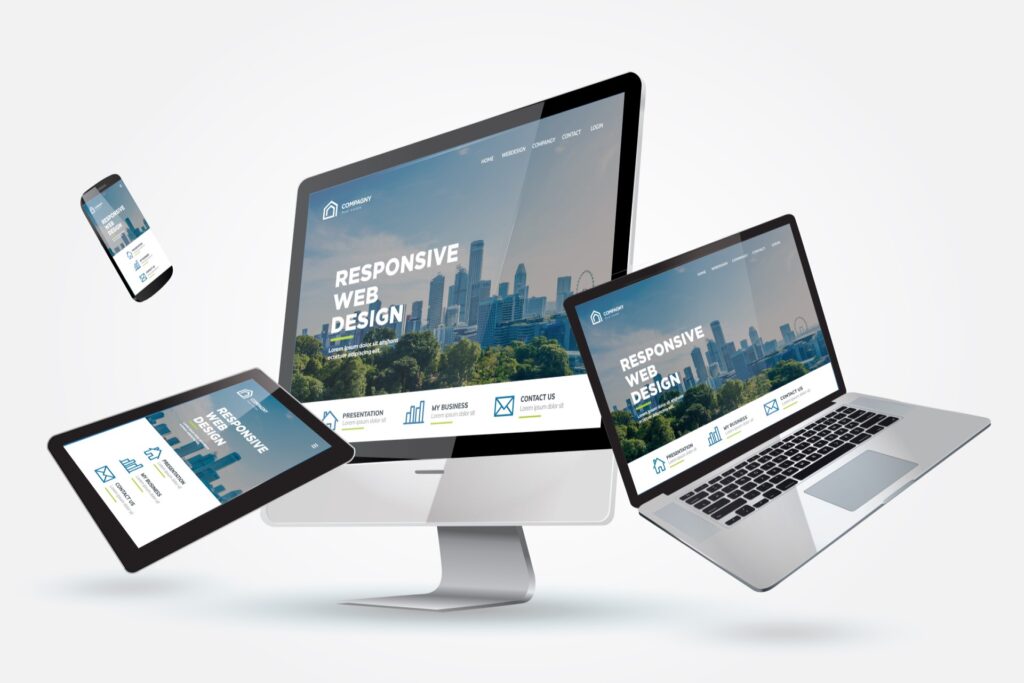The Importance of Responsive Websites
In the dynamic landscape of digital interaction, responsive web design has emerged as a cornerstone for creating websites that adapt seamlessly to various devices and screen sizes. This approach ensures that users experience consistent functionality and aesthetics, whether they access the site on a desktop computer, tablet, or smartphone. Let’s delve into why responsive web design is crucial, its benefits, and how it influences user engagement and SEO performance.

What is Responsive Web Design?
Responsive web design (RWD) is a design approach aimed at crafting websites to provide an optimal viewing and interaction experience across a wide range of devices. Rather than creating separate websites for different devices, RWD uses flexible layouts, fluid grids, and intelligent use of CSS media queries to adjust the website’s appearance and behavior based on the device’s screen size and orientation.
Seamless User Experience Across Devices
One of the primary advantages of responsive web design is its ability to deliver a consistent user experience. Users expect websites to be accessible and functional regardless of the device they use. RWD ensures that content remains readable, images are appropriately sized, and navigation remains intuitive, enhancing user satisfaction and reducing bounce rates.
Improved Mobile Usability
With mobile devices driving a significant portion of internet traffic, optimizing for mobile usability is paramount. Responsive design prioritizes mobile users by ensuring that websites load quickly and are easy to navigate on smaller screens. This focus on usability contributes to longer session durations and increased engagement, as users can access information effortlessly.
Cost-Effectiveness and Maintenance Efficiency
Maintaining separate websites for desktop and mobile can be costly and time-consuming. Responsive design streamlines this process by eliminating the need for multiple versions of the same content. It reduces development time and ongoing maintenance efforts, allowing businesses to allocate resources more efficiently while ensuring a consistent brand experience across devices.
SEO Benefits and Performance
Responsive websites tend to perform better in search engine results pages (SERPs) compared to non-responsive counterparts. Search engines like Google prioritize mobile-friendly websites in their rankings, especially since the introduction of mobile-first indexing. Responsive design ensures that all content is indexed accurately and improves load times, factors that contribute positively to SEO performance.
Adaptability to Future Devices
As new devices with varying screen sizes and capabilities enter the market, responsive web design remains adaptable and future-proof. Websites built with RWD principles can easily accommodate new technologies without requiring significant redesigns or overhauls. This scalability ensures that your website remains relevant and accessible to users on emerging devices.
Accessibility Compliance
Responsive design inherently supports accessibility by catering to users with disabilities or impairments. Features like scalable fonts, contrast adjustments, and touch-friendly navigation enhance usability for all users, aligning with accessibility standards and regulations. Designing with accessibility in mind ensures inclusivity and compliance with legal requirements.
Integrating Responsive Web Design Principles
Implementing responsive web design involves a strategic approach to planning, design, and development. Collaboration between designers, developers, and stakeholders is essential to ensure that the website effectively meets user needs across devices. Tools and frameworks that support responsive design, such as Bootstrap or Foundation, facilitate the creation of flexible and adaptive layouts.
Conclusion
Responsive web design is not just a trend but a fundamental strategy for creating websites that meet the diverse needs of today’s digital consumers. By prioritizing responsiveness, businesses can enhance user experience, improve SEO performance, and streamline maintenance efforts. As the digital landscape evolves, responsive design remains pivotal in ensuring that websites remain accessible, engaging, and effective across all devices. Adopting responsive web design principles positions your website for success in an increasingly mobile-centric and competitive online environment.

